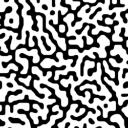Yahoo Answers is shutting down on May 4th, 2021 (Eastern Time) and beginning April 20th, 2021 (Eastern Time) the Yahoo Answers website will be in read-only mode. There will be no changes to other Yahoo properties or services, or your Yahoo account. You can find more information about the Yahoo Answers shutdown and how to download your data on this help page.
Trending News
How to show that for each integer n≥0, 1+10^(231+462n) is divisible by the squares of at least two different primes?
1 Answer
- nbsale (Freond)Lv 64 years agoFavorite Answer
It's divisible by 11^2.
Since 231+462n is odd, the expression is the sum of two odd powers: 1^(231+462n) + 10^(231+462n). So you can factor it as (1 + 10)(1 - 1(10) + 1(10)^2 + ... + 10^(230+462n))
Mod 11, every term of the 2nd factor is = 1, so the entire expression is equal to 1 X the number of terms, which is 231 + 462n = 11(21 + 42n), so it is divisible by 11. Therefore the number is divisible by 11^2.
The key here is that the exponent is divisible by 11, so that you have a multiple of 11 terms = 1 mod 11. The numbers are way to big to actually calculate. Here's a simpler example:
1000000000000000000000000000000001 = 1 + 10^33 =
8 264 462 809 917 355 371 900 826 446 281 times 121
It's also divisible by 7^2.
Divide the number by (1 + 10^3) = 1001 = 143x7
You get (1 - 10^3 + 10^6 - 10^9 .... + 10(231 + 462n - 3))
Each of those terms = 1 mod 7. There are (231 + 462n)/3 = 77 + 154n = 7(11+22n) terms. Therefore the sum of them = 0 mod 7, and is therefore divisible by 7. That gives us a second factor of 7, so the expression is divisible by 7^2.
The key here is that the 231+462n is divisible by both 3 and 7. Again it's too large to calculate, but a simpler example illustrates it:
1000000000000000000001 = 10^21 + 1 =
20408163265306122449 x 49
Fairly tough problem! It doesn't take any really advanced math to solve this, just algebra and modular arithmetic, but I found it a bit tricky to dig out the solution.


